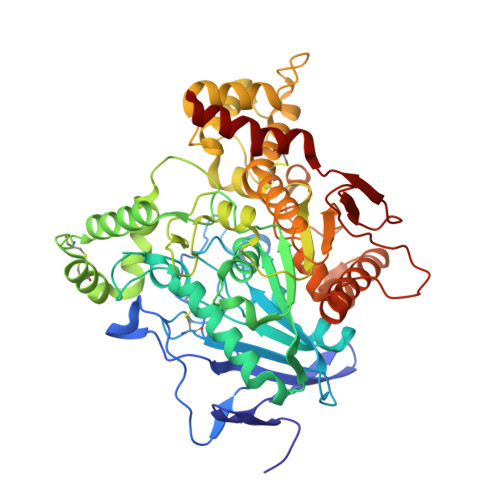Multitarget Drug Design Strategy: Quinone-Tacrine Hybrids Designed To Block Amyloid-beta Aggregation and To Exert Anticholinesterase and Antioxidant Effects.
Nepovimova, E., Uliassi, E., Korabecny, J., Pena-Altamira, L.E., Samez, S., Pesaresi, A., Garcia, G.E., Bartolini, M., Andrisano, V., Bergamini, C., Fato, R., Lamba, D., Roberti, M., Kuca, K., Monti, B., Bolognesi, M.L.(2014) J Med Chem 57: 8576-8589
- PubMed: 25259726
- DOI: https://doi.org/10.1021/jm5010804
- Primary Citation of Related Structures:
4TVK - PubMed Abstract:
We report the identification of multitarget anti-Alzheimer compounds designed by combining a naphthoquinone function and a tacrine fragment. In vitro, 15 compounds displayed excellent acetylcholinesterase (AChE) inhibitory potencies and interesting capabilities to block amyloid-β (Aβ) aggregation. The X-ray analysis of one of those compounds in complex with AChE allowed rationalizing the outstanding activity data (IC50 = 0.72 nM). Two of the compounds showed negligible toxicity in immortalized mouse cortical neurons Neuro2A and primary rat cerebellar granule neurons. However, only one of them was less hepatotoxic than tacrine in HepG2 cells. In T67 cells, both compounds showed antioxidant activity, following NQO1 induction. Furthermore, in Neuro2A, they were able to completely revert the decrease in viability induced by Aβ. Importantly, they crossed the blood-brain barrier, as demonstrated in ex vivo experiments with rats. When ex vivo results were combined with in vitro studies, these two compounds emerged to be promising multitarget lead candidates worthy of further pursuit.
Organizational Affiliation:
Department of Pharmacy and Biotechnology, Alma Mater Studiorum-University of Bologna , Via Belmeloro 6, I-40126 Bologna, Italy.

















